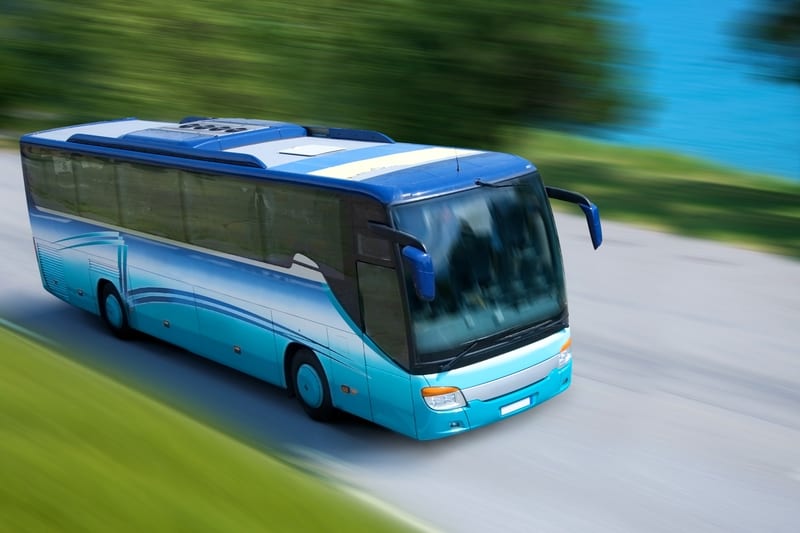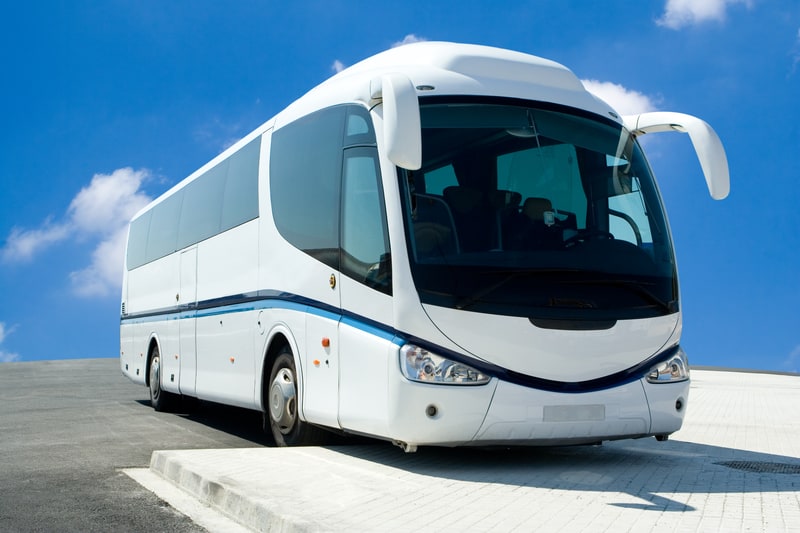
Buses are valuable vehicles for both local and trans-local transportation. There is almost a no better way to move dozens of people short distances quickly. However, these vehicles are huge and cumbersome and feel very slow.
This leads many travelers to wonder what a modern bus’s top speed is.
The top speed of a modern bus is between 55MPH and 100MPH, depending on the type of bus. Inner city and urban buses have lower top speeds than trans-local buses that are designed for highway driving. Most buses are limited by road laws, not by their maximum speed.
Modern buses are quicker than most people realize. The top speed of a bus on the road is not usually limited to the speed that the vehicle is capable of but rather by the laws that regulate the speeds that buses can travel.
Let’s explore the top speeds of the modern bus to find out how fast these vehicles are.
What Is The Top Speed Of A Bus?
Determining the top speed of a bus is very difficult, and every bus from every manufacturer and brand has a different maximum speed depending on how it is built.
Several types of buses have specific speed limitations depending on how they are constructed and what they are designed to do.
The top speed of a bus is usually anywhere from 50MPH to 100MPH, depending on the model, the bus type, the bus’s age, the construction, and what the bus is designed to do.
Inner-city buses are slower than open-road buses and have lower top speeds. Large buses, such as double-decker coaches, travel slower than smaller, lighter buses.
The bus’s top speed is determined by the engine’s power and what the bus is designed to do. If a bus is made to travel long distances, speed is a great advantage, so these buses are made to travel at higher speeds with a larger engine.
By contrast, buses that are med for slow driving within a city are designed for comfort rather than speed. These buses are made with enough torque to safely accelerate through an intersection. Still, they have a low top speed simply because they will never drive very fast.
Most modern buses have a working top speed of around 55 – 60MPH in the city. Trans-local buses can usually reach top speeds of 90MPH before they become uncomfortable. Still, they can reach speeds higher than 100MPH without too much trouble.
I listed the fastest buses in the world in this post.
Can A Bus Drive At Top Speed?

We have established that modern buses can have impressive speeds if designed for long-distance traveling, but can buses use these top-speed abilities? It is not common for a bus to be driven at top speed, which leads us to discuss the real-world maximum speeds that buses can travel at.
The truth is that while some buses are capable of very high speeds for their size, they are usually limited by road and traffic laws preventing them from traveling at their top speed.
The laws regarding buses in most countries are more strict than regular cars, and buses are usually limited to relatively slow speeds while on public roads, even if they can reach significantly higher speeds.
Some countries limit bus speed to 55MPH regardless of where the bust is, while others set the bus speed limit to around 75MPH on open roads and about 55MPH in urban areas.
This means that while buses can drive quickly, they are usually not permitted to do so by the road laws where they are operated.
Have Buses Always Been This Fast?
Modern buses are significantly quicker on the road than buses have been before. Modern engines, new technologies, better efficiency, improved fuels, better clutches and gearboxes, and better engine management have made buses far faster than their ancestors.
Modern buses can reach incredible speeds for their size and weight. Buses of the past were severely limited in their capabilities. They could not reach speeds that even come close to the speed of a modern bus.
Older buses still operating on the streets today can barely reach 55MPH, depending on the modern. Older buses still would travel at speeds as low as 35MPH.
Buses have never been the fastest vehicle, and they will never be the quickest vehicles. The truth is that modern buses are significantly faster than buses used to be. Newer buses drastically improve the experience of using a bus, making these vehicles far more practical for the present world.
Comparing the speeds of old buses to new buses is challenging. Still, an accessible facsimile is that comparing modern and old buses is like comparing modern laptops to early laptops. The differences are too many to be named.
Why Can Buses Not Drive Faster?

Modern buses are faster, but they are still pretty slow compared to other vehicles. They are equipped with mighty engines and very sophisticated technology, but, why can they not drive faster?
The truth is that buses do not need to drive faster than they do now. Driving at high speeds in a bus is very dangerous and very uncomfortable. Buses are not the fastest way to get around, but if they move any faster, they will quickly become unsafe and highly uncomfortable to use.
For this reason, buses are not made to go fast. Bus designers and manufacturers are less concerned about increasing bus top speed than about increasing passengers’ comfort and safety.
Buses have enormous and robust engines, but these engines are designed for economy, reliability, ad pulling power rather than for top speed.
The average bus has 220-450 horsepower, which is a lot compared to most cars, however, since buses are bigger, more horsepower is needed. This allows the bus to reach the required speeds without any problems. It’s expensive to upgrade the engine on a bus and the cost of making a bus go just slightly faster is simply not worth the cost.
Buses aren’t made to go fast, they’re made to transport people from A to B. Bus companies obviously want to make money, so why would they waste money on faster buses if it’s not necessary?
Conclusion
Modern buses are very quick for their size and weight, providing an effective means for transporting larger groups of people. Most modern buses are limited by speed laws but can reach speeds appropriate for their intended use case and design.
